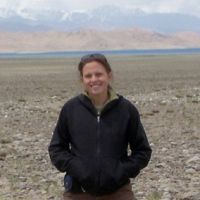Sklar et al., 2017
The problem of predicting the particle size distribution of sediment supplied by hillslopes to rivers.
Sklar, L. S., Riebe, C. S., Marshall, J. A., Genetti, J., Leclere, S., Lukens, C. L., Merces, V. (2017)
Geomorphology. 277 31.
-
Sierra, INVESTIGATOR
-
National, Boulder, Eel, Sierra, INVESTIGATOR
-
Sierra, GRAD STUDENT
Abstract
Sediments link hillslopes to river channels. The size of sediments entering channels is a key control on river morphodynamics across a range of scales, from channel response to human land use to landscape response to changes in tectonic and climatic forcing. However, very little is known about what controls the size distribution of particles eroded from bedrock on hillslopes, and how particle sizes evolve before sediments are delivered to channels. Here we take the first steps toward building a geomorphic transport law to predict the size distribution of particles produced on hillslopes and supplied to channels. We begin by identifying independent variables that can be used to quantify the influence of five key boundary conditions: lithology, climate, life, erosion rate, and topography, which together determine the suite of geomorphic processes that produce and transport sediments on hillslopes. We then consider the physical and chemical mechanisms that determine the initial size distribution of rock fragments supplied to the hillslope weathering system, and the duration and intensity of weathering experienced by particles on their journey from bedrock to the channel. We propose a simple modeling framework with two components. First, the initial rock fragment sizes are set by the distribution of spacing between fractures in unweathered rock, which is influenced by stresses encountered by rock during exhumation and by rock resistance to fracture propagation. That initial size distribution is then transformed by a weathering function that captures the influence of climate and mineralogy on chemical weathering potential, and the influence of erosion rate and soil depth on residence time and the extent of particle size reduction. Model applications illustrate how spatial variation in weathering regime can lead to bimodal size distributions and downstream fining of channel sediment by down-valley fining of hillslope sediment supply, two examples of hillslope control on river sediment size. Overall, this work highlights the rich opportunities for future research into the controls on the size of sediments produced on hillslopes and delivered to channels.
Citation
Sklar, L. S., Riebe, C. S., Marshall, J. A., Genetti, J., Leclere, S., Lukens, C. L., Merces, V. (2017): The problem of predicting the particle size distribution of sediment supplied by hillslopes to rivers. Geomorphology. 277 31.. DOI: 10.1016/j.geomorph.2016.05.005
 This Paper/Book acknowledges NSF CZO grant support.
This Paper/Book acknowledges NSF CZO grant support.
Explore Further



